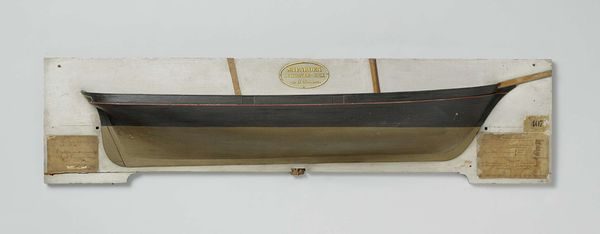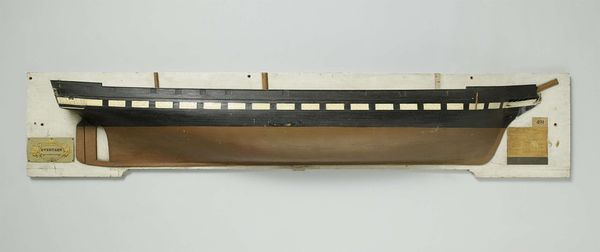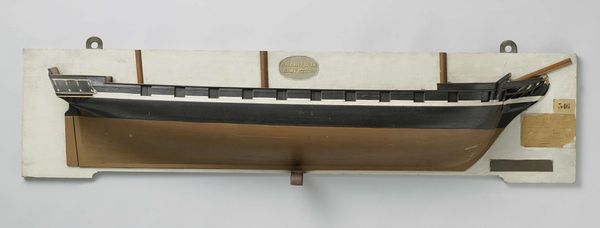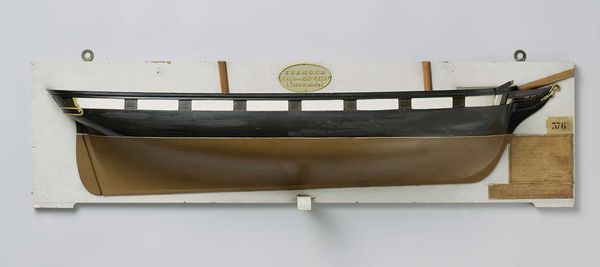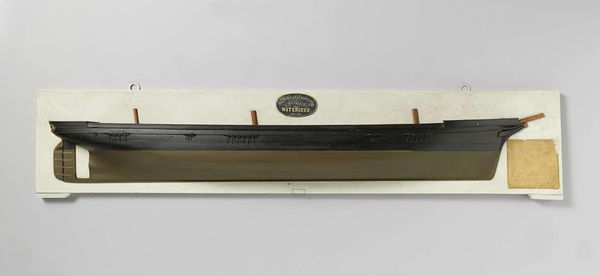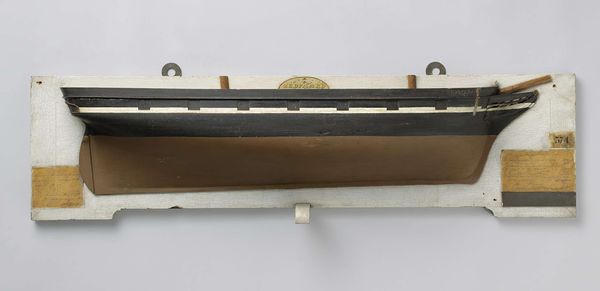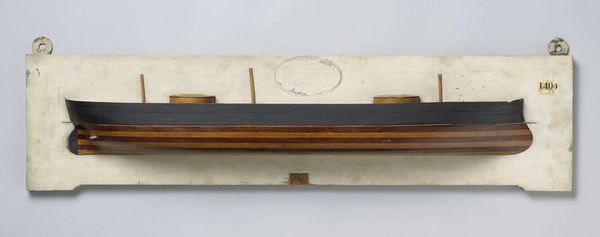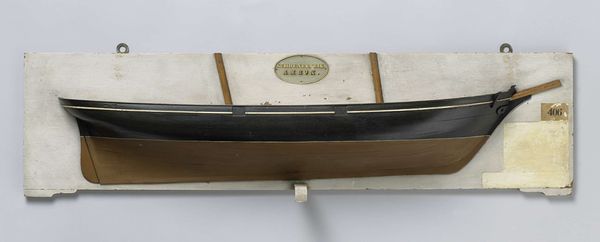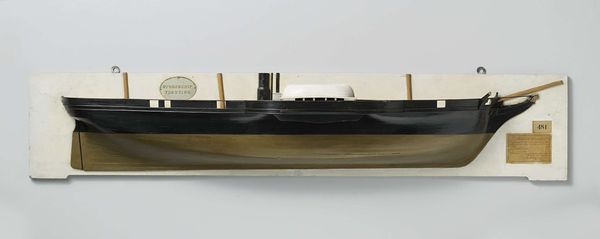
sculpture, wood
#
displayed
#
3d printed part
#
product displayed
#
3d printing
#
plastic material rendering
#
virtual 3d design
#
sculptural image
#
3d shape
#
prop product design
#
sculpture
#
wood
#
mechanical engineering model
#
realism
Dimensions: height 34.5 cm, width 162 cm, depth 16 cm
Copyright: Rijks Museum: Open Domain
Curator: Looking at this “Half Model of a Screw Steamer” made around 1855, attributed to Rijkswerf Vlissingen, one immediately senses a certain functional elegance. What strikes you most at first glance? Editor: It exudes a stark stoicism. The monochrome palette and precise lines speak of maritime discipline and the solemn promise of seafaring adventures—but somehow frozen in time. Curator: Absolutely. Its creation coincides with a fascinating period, socially. Steam power was rapidly transforming naval power and global trade networks. Consider how race, gender, and class were intertwined within this new, industrialized context of maritime work and imperial expansion. These vessels weren't merely technological marvels. Editor: That's the duality—technology and representation. We can see the visual vocabulary of progress being solidified through symbols of Dutch maritime power. Take that ornate emblem. Curator: Precisely! It anchors the object to national identity, but the very construction of this “half” model raises intriguing questions about completeness and representation, as does its stark construction in wood and contrasting colors. Who was it really “for,” and what ideological functions might such design fulfill? Editor: Right, its function as a scale model designed for shipbuilders, juxtaposed with the gilded details and regal emblem, hints at complex systems of power. You are presenting, on one hand, a piece that aided ship construction but on the other, glorifying the power of an empire on whose projects so many worked. What's that tiny placard though? Curator: Those are probably technical annotations for the builders themselves! Consider the historical context, the laborers, and even the indigenous populations impacted by these vessels. Editor: I see your point entirely; this half-model encapsulates the complexities of ambition. What began as the tool of a Dutch engineer becomes weighted with political and social narratives of the era. Curator: Precisely. Editor: Seeing these things together offers a window into an age of invention, commerce, and cultural transformation—albeit from very different, yet interconnected, perspectives. Curator: Indeed, acknowledging these layers offers a chance to see this artwork not as a singular artifact, but as a node within historical systems.
Comments
No comments
Be the first to comment and join the conversation on the ultimate creative platform.
